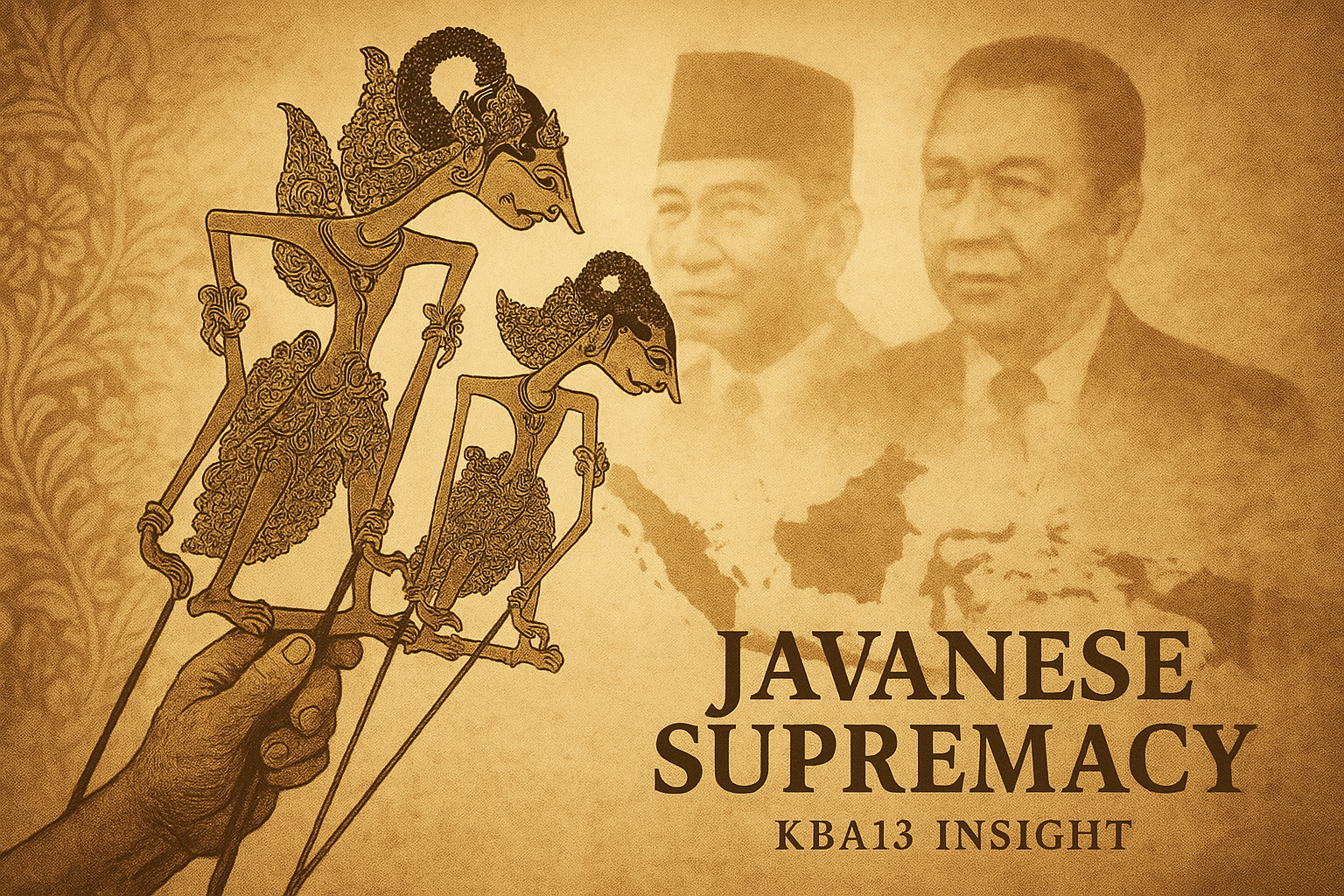Introduction: Defining Political Culture
Political culture can be defined as “the norms, beliefs, and values within a political system.” To speak of political culture means to engage with three interwoven elements: norms, beliefs, and values that guide the structure of political order. These elements function not only as abstract principles but also as living practices that define legitimacy, shape leadership, and regulate relations between rulers and citizens.
In Indonesia, political culture has long been associated with Java. Javanese norms, beliefs, and values dominate the national framework, filtering and sometimes suppressing political traditions from other regions such as Aceh, Sumatra, or Kalimantan. As a result, Aceh’s political culture has not yet found its rightful place in the national study of politics, even though it possesses its own rich and independent tradition.
The Javanese Worldview: Sacred, Mythical, Mystical
The Javanese intellectual universe is marked by three key dimensions: the sacred, the mythical, and the mystical. This orientation has given rise to a political system that is eclectic—often described as gado-gado—and sometimes difficult for non-Javanese to fully understand. Political decisions are rarely based solely on rational calculation; they are embedded in prophecy, omens, and symbolic stories.
As expressed in Javanese thought, “Javanese politics defending its system ‘asks’ for turbulent earth-like stories in wayang. This means that the reference to the Javanese political system or culture is the predictions of the clergy, and the procedures for its implementation are adjusted to the wayang stories.” In this way, politics becomes an extension of cultural performance, with rulers and citizens playing roles on a cosmic stage.
The Tension between Pancasila and Islam
The relationship between Pancasila and Islam demonstrates the tension that arises when Javanese political values meet broader religious aspirations. The historical question has always been how Islam should be positioned within the framework of the Republic.
As noted in the original argument, “The issue of the response to Pancasila (the five precepts) is one of the pieces of evidence of Indonesia’s political history. Here, the tension that most often occurs is how to place Islam as the basis of the state within the Republic of Indonesia.”
Kuntowijoyo offered a sharp reflection on this matter:
“Perhaps the issue of the feud between Islam and Pancasila is too sensitive. If it is true that there is not a single verse in Islam that contradicts Pancasila, and none of the precepts in Pancasila contradicts Islam, where is the conflict? As a result, not many people dare to violate the ‘national taboo’… it is a historical fact that is too bare to be covered up that there was a mutual misunderstanding between Islam and Pancasila.
The fault indeed lies not in the pure teaching on both sides but practice. There is a genuine fear that Pancasila will become a religion on the Muslim side. The existence of a belief that calls itself the Pancasila Religion is enough evidence that potentially Pancasila can become a religion. Also, the idea of ‘Panca Religion’ can threaten the existence of religion.”
Kuntowijoyo continued by distinguishing between pure ideology and practical ideology. In his view, pure ideology is final and unchangeable, while practical ideology shifts with history and political need. This explains why Pancasila in the New Order era became a “fixed price,” sacred in rhetoric but inconsistent in practice.
Sukarno and the Wayang System of Power
Sukarno’s leadership reflected the Javanese conception of politics. His preference for a unitary state over a federal one was based on Java’s dominance in population, culture, and history of nationalist struggle. His political imagination was steeped in wayang and symbolic performances, often creating tensions with Muslims who demanded clearer ideological foundations.
Bernard Dahm highlighted this Javanese orientation vividly: “on the cover, Soekarno is depicted playing wayang, which implies that the political culture system played by Soekarno is indeed a puppet system with the assumption that each individual is under the control of the dalang (Soekarno).”
This image reflects how Sukarno positioned himself as the puppet master of the Republic, directing elites and masses alike as though they were characters in a drama. Yet such a system also produced inevitable clashes with elites and communities who refused to follow the script he desired.
Soeharto and the Ksatria Ideal
If Sukarno was the dalang, Suharto was the ksatria. For three decades, he ruled Indonesia in the image of a Javanese knight, embodying harmony, order, and paternal authority. His biographer, K.H. Ramadhan, openly admitted the difficulty of understanding Suharto without understanding Javanese culture: “This task is tough, sir. I was born in West Java, while your father is from Central Java. I know very little about Javanese culture, sir.”
When the crisis of 1998 forced Suharto to resign, he did not interpret it as a defeat but as a transformation. In Javanese cosmology, a knight may attain the rank of Brahmin after enduring a life-altering shock. Suharto reframed his downfall as stepping down from keprabon (seat of power) to becoming a pandito (wise man). Political crisis thus became spiritual fulfillment.
The Center and the Periphery: Java and the “Regional People”
Javanese political dominance also produced a system of central and regional relations modeled on earlier kingdoms. As one historical parallel puts it: “to maintain the loyalty and obedience of subordinates to the King (as in the case of the Mataram kingdom), then: ‘requires regional rulers, especially the strong ones, to stay in the palace several months a year. When the local ruler returns, he is obliged to leave one of his immediate family as a hostage in the palace.’”
Modern Indonesia mirrored this logic. Jakarta became the palace, and elites from Aceh, Sumatra, Kalimantan, and other regions were expected to prove loyalty, adopt Javanese etiquette, and adjust their politics to central expectations. Aceh, despite its proud history of a sultanate and Islamic political culture, was reduced to the position of a regional contributor. “The word ‘donate’ is what puts Aceh in the coordinates of ‘regional people’ with all the rules attached to it, who must then know how to behave with ‘central people.’”
To become part of the “central people,” regional figures had to undergo tests of compliance: loyalty to Pancasila, alignment with Javanese cosmology, and the ability to be njawani (Javanese-like) in manner and political behavior. Without connections, lobbying skills, and cultural adaptation, regional actors had little chance of reaching the highest circles of power.
Conclusion: A Javanese Political Landscape
The conclusion is clear: “The landscape of Indonesian political culture is the landscape of Javanese political thought.” From Sukarno’s puppet-mastering to Suharto’s knightly kingship, Indonesia’s political stage has been dominated by Javanese values.
This hegemony created unity but also resentment. It silenced or subordinated alternative traditions such as Aceh’s, producing enduring tensions between center and periphery. Until Indonesia develops a political culture that integrates Acehnese, Minangkabau, Bugis, Balinese, and Papuan traditions on equal footing, the Republic will remain bound by the sacred-mythical-mystical worldview of Java.



Leave a Reply